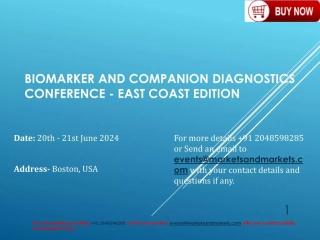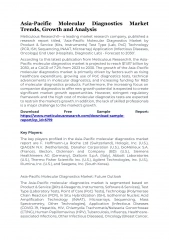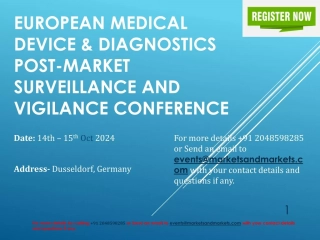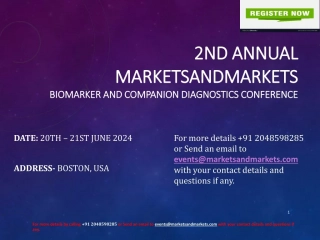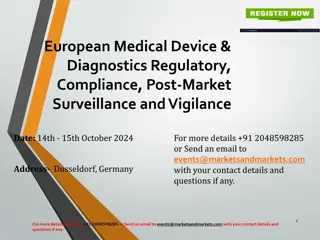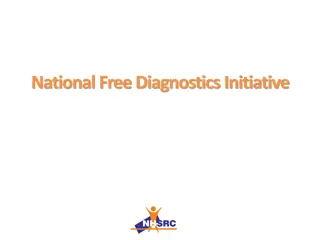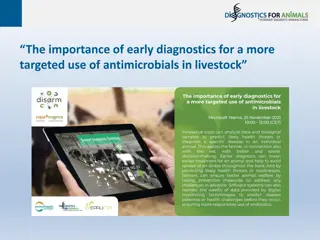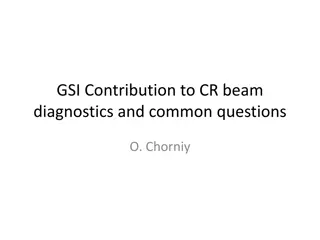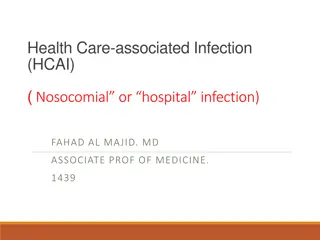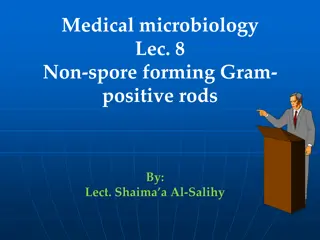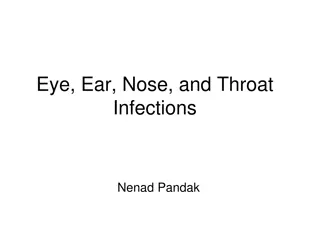Overview of Corynebacterium: Characteristics, Infections, and Laboratory Diagnostics
Corynebacterium is a genus of Gram-positive rod-shaped bacteria widely distributed in nature. They are catalase positive, non-spore-forming, non-motile bacteria with unique morphological features. The most notable human infection caused by Corynebacterium is diphtheria, characterized by the formation of pseudomembranes in the throat. Laboratory diagnostic tests involve throat swabs, Gram staining, special staining, and culture on selective media. Understanding the characteristics and diagnostic methods of Corynebacterium is crucial for identifying and treating infections.
Download Presentation

Please find below an Image/Link to download the presentation.
The content on the website is provided AS IS for your information and personal use only. It may not be sold, licensed, or shared on other websites without obtaining consent from the author. Download presentation by click this link. If you encounter any issues during the download, it is possible that the publisher has removed the file from their server.
E N D
Presentation Transcript
Corynebacterium Corynebacterium And And Mycobacterium Mycobacterium
Corynebacterium Corynebacterium
Corynebacterium Corynebacterium is a genus of Gram-positive rod-shaped bacteria. They are widely distributed in nature. They are catalase positive non-spore-forming non-motile rod-shaped bacteria that are straight or slightly curved. Metachromatic granules are usually present representing stored phosphate regions. The bacteria has been described as the form of V or Y shape, or what is called "Chinese letters arrangement".
The most notable human infection is diphtheria, caused by Corynebacterium diphtheriae. It is also known as the Klebs-L ffler bacillus. The bacteria which are only lysogenic for phage are capable of producing a powerful cytotoxin. Production of this toxin leads to the formation of pseudomembranous which are composed of dead epithelial cells, white blood cells, red blood cells, and fibrin that form around the tonsils and back of the throat, which may lead to suffocation of the infected child.
Laboratory diagnostic tests: Specimen Throat swab from a diphtheria case 1. Gram stain; is performed to show gram-positive, highly pleomorphic organisms with no particular arrangement (classically resembling Chinese letters). 2. Special stain like Alberts's stain is used to demonstrate the metachromatic granules (or polyphosphate, or Babes-Ernst granules). Fixed smear is prepared, Albert's stain is added for 3-5 minutes, washed with tap water, lugol's iodine is applied for 1 minute, washed then dried and finally examined under the microscope. The cytoplasm appears light green and the granules blue/black.
Laboratory Diagnosis Throat swab. Skin swab. 1. Specimens : 2. Staining: Albert's stain Metachromatic granules (dark), bacilli (green). Gram s stain G + ve bacilli, Chinese letter.
3. Culture: a. Loeffler s medium. (Enriched media only) is used primarily for the cultivation of corynebacteria It is a selective medium, does not enrich other organisms of the throat. b. Tellurite agar (blood agar + potassium tellurite) It is a selective medium which allows all Corynebacteria (including C. diphtheriae) to reduce tellurite to metallic tellurium producing brown colonies and, only in the case of C. diphtheriae, a black halo appears around the colonies allowing for easy organism. differentiation of the Black colonies Colonies appear grey-black due to tellurite reduction telluride
c. Tinsdale medium: It contains cystine tellurite, this medium is light yellow , colonies of C. diphtheriae appear Small, brownish-black colonies surrounded by a brown halo in the agar. Tinsdale agar d. Can grow on Blood or chocolate agar: assures the recovery of corynebacteria as well as any other pathogenic bacterial species that might be present, differentiating those that may be hemolytic. Corynebacteria on blood agar The bacteria grow into convex and semi-opaque colonies.
Transmission:- Respiratory air droplets, contact with cutaneous lesion and /or contaminated objects. Treatment:- 1. Antitoxin ------------ Neutralize toxin. 2. Antibiotics ---------- Erythromycin to eliminate bacteria. Protection:- Vaccines (DPT), booster dose DT after 10 years.
In vivo and in vitro tests: Elek's test for toxigenicity: It is an in vitro test performed only in reference to public health laboratories in order to know if the organism is able to produce the diphtheria toxin or not. Filter paper strep containing antitoxin is placed on agar plate. The tested culture is streaked across the plate after 48 hours the antitoxin precipitates the toxin, resulting in the formation of bands between the filter paper and the bacterial growth.
In vivo Schick's test intradermal injection of 0.1 ml of purified toxin. If a person does not have enough antibodies to neutralize that toxin, the skin around the injected area will become red and swollen, indicating a positive result. This swelling disappears after a few days. If the person has immunity, then little or no swelling and redness will occur, indicating a negative result
Mycobacterium The genus includes pathogens known to cause serious diseases in human, including tuberculosis and leprosy Mycobacteria are aerobic and nonmotile bacteria. They are characteristically acid-alcohol fast. Mycobacteria do not contain endospores or capsules. They are not classified as either Gram-positive or Gram-negative they are acid fast bacilli referring to their resistance to decolonization by acids during staining procedures.
Mycobacterium tuberculosis Mycobacterium tuberculosis (MTB) is the etiologic agent of tuberculosis in humans. The bacterium is a facultative intracellular parasite, usually of macrophages, and has a slow generation time, 15-20 hours. The cell wall structure of Mycobacterium tuberculosis contains peptidoglycan and complex lipids. Over 60% of the mycobacterial cell wall is lipid. The lipid fraction of MTB's cell wall consists of three major components, mycolic acids, cord factor, and wax-D. L wenstein-Jensen medium, better known as LJ medium, is a selective egg- based medium specifically used for the culture and isolation of Mycobacterium species, including Mycobacterium tuberculosis, from clinical specimens
Resist decolorization by high acid concentration so the name "ACID FAST BACILLI = AFB" is given. Does not stain by Gram s Stain
Laboratory diagnostic tests Specimen; sputum, CSF, joint fluids, urine gastric washings, biopsy material. Direct smear; Ziehl-Neelsen staining for examining the AFB (acid fast bacilli). In order to detect Mycobacterium tuberculosis in a sputum sample. Procedure; 1. Strong carbol fuchsin is added to a fixed smear of sputum. Flood the slide with stain, heat until steaming. 2. Decolorize with 20% H2SO4 . 3. Wash with tap water. 4. Add methylene blue for 1 minute (counter stain). 5. Dry and examine under microscope. Acid-fast bacilli appear pink in a contrasting blue background.
Another method is the Kinyoun method. The procedure for Kinyoun staining is similar to the Ziehl-Neelsen stain, but does not involve heating the slides being stained. The Kinyoun staining method uses carbol fuchsin as a primary stain, followed by decolorization with an acid-alcohol solution and methylene blue as a counterstain. Kinyoun carbol fuschsin has a greater concentration of phenol and basic fuchsin and does not require heating in order to stain properly.
Culture; Lowenstein-Jensen medium which is an egg based medium prepared as slants contain eggs, potato, serum, glycerol, malachite green and antibiotics. Colonies appear dry, rough, wrinkled; these bacteria are very slow growers it takes 4-6 weeks until visible growth appears.


